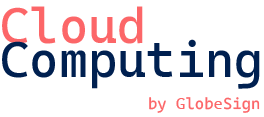In today’s fast-paced digital landscape, cloud computing has become the backbone of many organizations. As companies transition to cloud environments, managing expenses while enhancing productivity has never been more crucial. This brings us to an essential topic for businesses — cloud cost optimization strategies. In this blog post, we’ll delve deep into practical strategies that can help organizations reduce cloud expenditures, improve their financial health, and maximize their return on investment in cloud technologies.
Understanding Cloud Costs
Before diving into optimization strategies, it’s important to understand the nature of cloud costs. Unlike traditional IT infrastructure, cloud services often operate on a pay-as-you-go model, which can lead to unexpected expenses if not monitored closely. Here are the primary components of cloud costs:
- Compute Costs: Fees associated with processing power (e.g., virtual machines).
- Storage Costs: Expenses related to data storage solutions.
- Data Transfer Costs: Charges incurred when moving data in and out of the cloud.
- Licensing Fees: Costs for software applications and tools used within the cloud environment.
Understanding where your costs originate is the first step towards optimizing them.
Implementing Cloud Cost Optimization Strategies
No matter the size of your organization, implementing effective cloud cost optimization strategies can lead to significant savings. Here are several methods to consider:
1. Rightsizing Cloud Resources
One of the easiest ways to start optimizing cloud costs is by ensuring you are not over-provisioning resources. Rightsizing involves adjusting your cloud resources to match your actual needs. This can include:
- Analyzing usage data to identify underutilized instances.
- Scaling down or terminating instances that are not necessary.
- Using auto-scaling features to adjust resources based on demand.
For example, a mid-sized e-commerce company saw a 30% reduction in its monthly cloud bill after right-sizing its database instance, reducing the instance type from high-capacity to one that met their average load requirements.
2. Utilizing Reserved Instances and Savings Plans
Cloud providers like AWS and Azure offer Reserved Instances (RIs) and Savings Plans, which allow you to commit to using a certain amount of computing resources over a period of time, often leading to significant discounts compared to on-demand pricing. Key points include:
- Cost Efficiency: RIs can offer discounts of up to 75% for committed use.
- Flexible Options: Choose between different terms and payment options to suit your organization’s needs.
- Predictable Budgeting: Committing to reserved usage can facilitate more accurate budgeting and financial forecasting.
3. Implementing Automation and Monitoring Tools
Automation can dramatically improve cost management in the cloud. By employing monitoring and management tools, you can automate the scaling of resources, set alerts for unusual spending patterns, and enforce policies to eliminate waste. Consider these technologies:
- Cloud Management Platforms: Tools like CloudHealth and Spot.io provide insights into resource usage, enabling better decision-making.
- Automated Scheduling: Shut down non-essential services during off-hours to save costs.
- Monitoring Tools: Use alerts to notify you when costs exceed certain thresholds.
4. Leveraging Spot and Preemptible Instances
Spot instances, offered by cloud providers at significantly lower prices, are an excellent way to optimize costs, particularly for workloads that can tolerate interruptions. Here’s how to effectively use them:
- Ideal for Non-Critical Workloads: Use spot instances for batch processing, testing, or development environments.
- Combine with Traditional Instances: Use a mix of on-demand, reserved, and spot instances to balance affordability and reliability.
For instance, a data analysis company cut costs by 65% by shifting its data-processing tasks to spot instances while reserving on-demand instances for critical production work.
5. Establishing Governance and Policies
Effective governance is crucial for ensuring long-term cost optimization. By establishing policies around cloud resource usage, organizations can minimize waste. This might involve:
- Creating Approval Processes: Ensure that resource provisioning and de-provisioning requires approval.
- Regular Auditing: Conduct regular audits of cloud usage and costs to identify trends and areas for improvement.
- Employee Training: Educate teams on responsible cloud usage and cost implications.
Real-World Case Studies
To illustrate the impact of these strategies, let’s look at two companies that successfully implemented cloud cost optimization:
- A Financial Services Firm: After analyzing their cloud expenditures, they realized they were spending heavily on underutilized compute instances. By rightsizing and moving to Reserved Instances, they saved over 40% on their cloud bills.
- An Online Streaming Company: This company shifted portions of their video processing workloads to spot instances, successfully reducing expenses by over 60% while maintaining performance for their most critical services.
Conclusion
As cloud adoption continues to rise, organizations must take a strategic approach to cost management. Implementing cloud cost optimization strategies not only reduces unnecessary expenditures but also encourages more efficient usage of cloud resources. From rightsizing and utilizing reserved instances to leveraging automation, there are multiple paths to consider.
By treating cloud costs proactively and instituting governance policies, businesses can ensure they maximize their cloud investments today while preparing for future growth. Embracing these strategies will empower organizations to become more agile, efficient, and aligned with their financial objectives in the cloud.
As we move into 2024, staying ahead of cloud cost trends will be essential for any organization aiming to utilize cloud technology to its fullest potential. By prioritizing cost optimization now, companies can pave the way for sustainable growth and innovation in the evolving cloud landscape.
FAQ
What are cloud cost optimization strategies?
Cloud cost optimization strategies are methods implemented to reduce unnecessary spending and improve financial efficiency in cloud resource usage.
Why is rightsizing important?
Rightsizing ensures that organizations only pay for the resources they actually need, avoiding the costs associated with over-provisioning.
How can automation help with cost optimization?
Automation can enhance cost management by enabling automatic scaling, setting alerts for excessive spending, and enforcing resource management policies.
